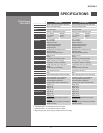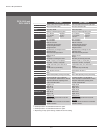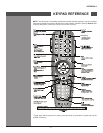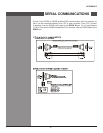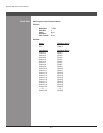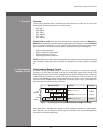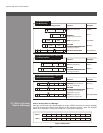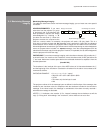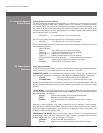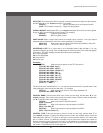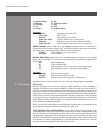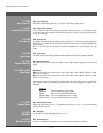
Wolf Cinema Owner's Manual
B-5
Within each message, multiple parameters of data must be separated by one “• space”
character.
Data pertaining to a source setup other than the current source setup is preceded by: the •
letter “S”, the source setup number (i.e., channel), and a space. This is similar to an “extra”
parameter P0.
Text parameters such as channel names are enclosed in double quotes following the data, •
as in “Name”.
TEXT PARAMETERS: Most data is simply a numerical value, however some messages also
require text. For example, a channel naming message typically includes a text-based name
after the channel number—enclose this text in double quotation marks, as in “Tilt the Wagon”.
Use all characters as desired except for the following special characters shown in the left column
below—these require a 2-character combination as shown:
Table 1. Special Characters for Text
If you want this... Enter this... Description
\ \\ Backslash
“ \“ Quote
( \( Left bracket
) \) Right bracket
0x01 \b Start of binary message (control code)
0x0A \n New line - if the text can be displayed on more than one
line, this will set the line break.
0x1B \x control code (ESC)
0x0E \e End of binary message (control code)
0x11 \g Xon (control code)
0x13 \s Xoff (control code)
Sampling Messages and Their Meaning
Desired Action Message Description
Get current Chan# (CHA?) Request by controller for current channel #
Chan# reply from proj. (CHA!24) Reply from proj. that current channel is 24
Set Chan# (CHA 24) SwitchtotherstchannelontheTPC
Get on-screen display status (OSD?) Request by controller for OSD state.
On-screen display is disabled. (OSD!000) Reply from proj. that menus are not displayed
Set on-screen display to ON (OSD 1) Turn the menu system on.
2.2 Sampling Messages
and Their Meaning
AppendixB►SerialCommunications



